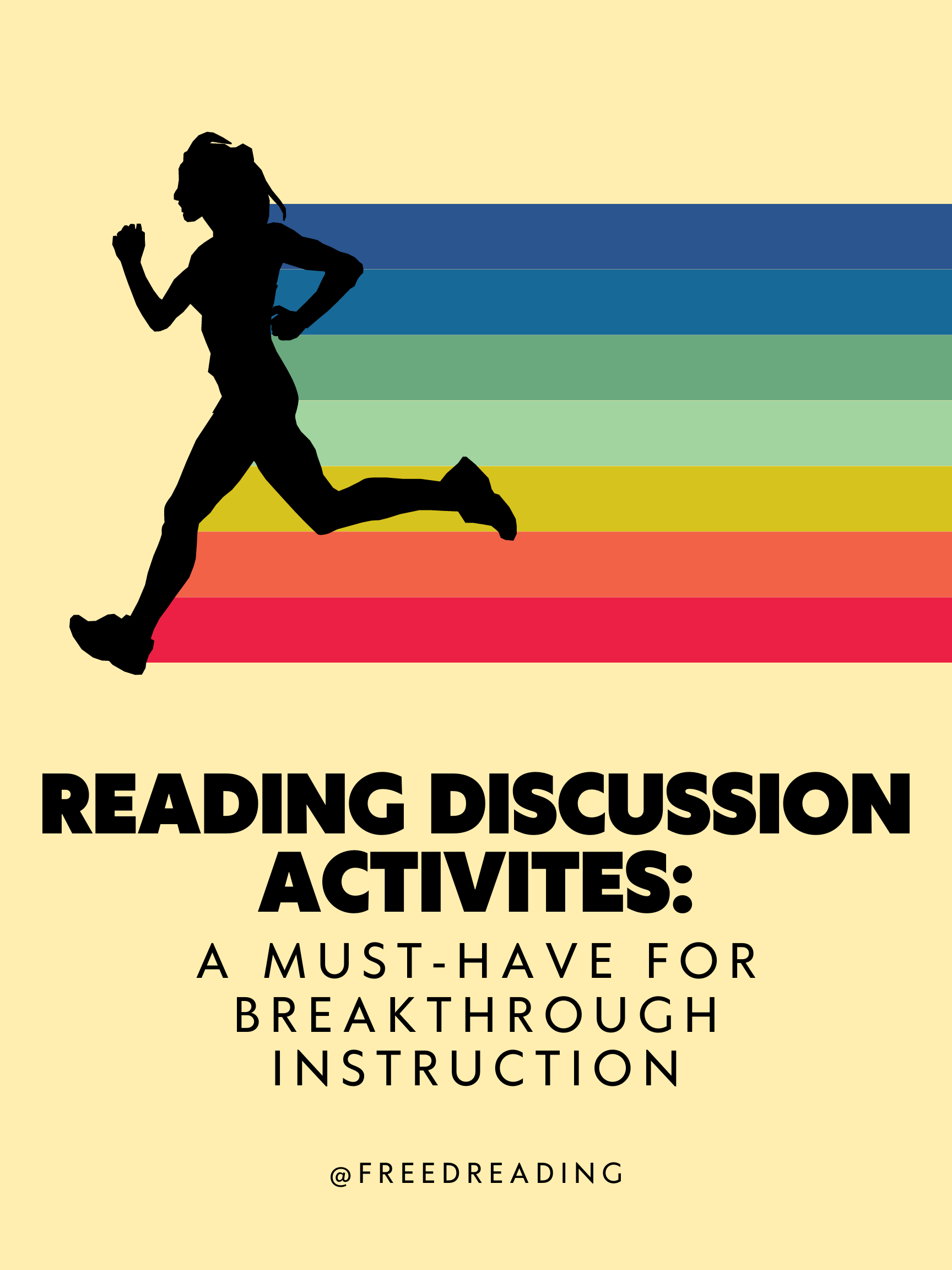
Reading Discussion Activities
When people think of reading discussion activities, they often imagine a whole class in a big circle, but if you want breakthrough instruction in both the content and discussion skills, the students must take center stage.

Discussion as Teaching Method
As a new teacher, I was recommended and read Teaching With Your Mouth Shut by Donald Finkel. Even as a first-year teacher, I began to see discussion as a teaching method beyond the teacher’s facilitation and voice. Here are some of key suggestions in this book, primarily for whole class extended discussions.
- The questions you write are your voice without saying a word.
- Your students choose which questions to amplify, which makes them better discussers.
- Let students navigate roles in discussion without your interference.
- You function as a silent recorder. You can type/emphasize certain things to amplify key points.
- You offer post-discussion notes and observations.

Teaching Group Discussion
While Finkel helped me get out of the students’ way, it didn’t prepare me to teach them how to actually discuss. Years later, I encountered the triad Socratic Seminar method and latched on to it. The key ingredients to teaching group discussion are
- Observing others discussing while watching for certain skills
- Coaching other students at intervals during the discussion
- Trading places between discussers and coaches
Teaching Group Discussion Skills
Reading discussion activities are important, but are they teaching group discussion skills? Here are points of emphasis recommended by the Common Core. They are from Speaking & Listening Standard 1.
- Students are prepared for discussion both from reading the main text and through supplemental research to enrich the conversation.
- Students navigate roles and group facilitation to complete the task at hand.
- Students ask a variety of questions: clarifying, challenging, and broadening. They also include everyone in the conversation.
- Students respond thoughtfully to diverse viewpoints, summarize points of agreement and contention, and be willling to modify viewpoints as warranted.
Here is how I use reading discussion activities to teach them:
- Introducing and gamifying them for practice in shorter small group conversations
- Using triad Socratic Seminars to integrate them
- Always setting a discussion goal for any discussion (small or large) throughout the year. I assign a coach to monitor and report back to me.
- Having clear evaluative targets for specific skills–not just whether or not someone spoke.
Reading Discussion Activities
This bundle gathers some of my most popular products–all supporting discussion!
- A fun UNO-Style Small-Group Discussion Game builds early discussion habits
- Group Discussion Evaluation Checklist and Sentence Frames helps you teach and give feedback on students’ skills as they grow
- Socratic Seminars Questions Examples, Handouts, and Lessons builds deeper and deeper conversations starting with shorter texts, then longer texts, and finally thematic units
- Questions for Book Club in High School increases independence and ownership of discussion skills


